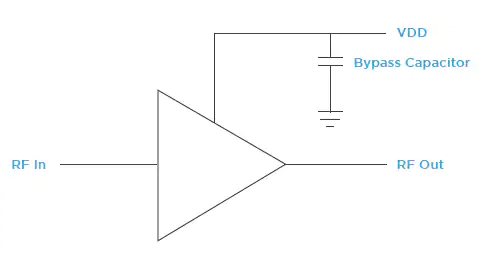How to select Bypass Capacitors ?
High-speed switching environments generate noise on power lines (or planes) due to the charging and discharging of internal and external capacitors of an integrated circuit. The instantaneous current generated with the rising and falling edges of the outputs causes the power line (or plane) to ring. This behavior can violate the VCC recommended operating conditions or generate false signals, creating serious problems. A simple and easy solution must be considered to prevent such a problem from occurring. This solution is the bypass capacitor.
A bypass capacitor stores an electrical charge that is released to the power line whenever a transient voltage spike occurs. It provides a low-impedance supply, thereby minimizing the noise generated by the switching outputs of the device.
Common Types of Capacitors and Trade-offs
As described in the previous sections, the materials, and structure
of a capacitor will dictate its attributes, like parasitics,
temperature stability, maximum voltage, linearity, cost and size.
A summary of the most popular capacitors available in surface
mount packages is given in Table 2.
Ceramic capacitors are the most common capacitor type since
they are inexpensive, offer a wide range of values, and provide
solid performance. Tantalum, OSCON, and Aluminum Electrolytic
capacitors are all polarized (specifically to be used as a bypass
capacitor). Tantalum found their niche in low-voltage systems.
Aluminum electrolytic capacitors are a common choice for lowto-medium frequency systems, but not switching circuits (they
hold their charge too well which doesn’t suit them for the rapid
cycling of production testing). OSCON is a special capacitor type
developed to provide low parasitics, wide frequency range and
full temperature range (the best quality available for the highest
price tag). If you have the budget, these capacitors will provide
quality bypass for any circuit.
Mica and Plastic Film capacitors are included for completeness.
Their primary use is in filter design instead of bypass.
Since ceramic capacitors are the most widely used bypass
capacitors, it is useful to look at the options available in
purchasing. As expected, ceramic caps are available in a wide
range of values and in a wide variety of packages. Within these
parameters, there are further choices which will determine the
final price. An example is set forth in Table 3. In a recent bill of
materials, the capacitors were labeled as “X7R”. The X and 7 set
the widest temperature range. The final letter “R” reports the
tolerance of that capacitor over the temperature range. In this
case, there would only be a 15% change in capacitor vs
temperature. A wider temperature range and tighter tolerance
earn higher price tags.
Selecting the Package for the Bypass Capacitor
Once the dielectric material, dielectric quality, temperature
range, acceptable leakage and voltage range have been met, the
final choice involves package dimensions. Typically, the package
size is chosen by “what was used last time” or what is big enough
to solder by hand (if a prototype).
What you need to remember is that the equivalent circuit model
will change with different packages. The main issue is the
equivalent series inductance (ESL). Obviously, a capacitor
structure is constant as long as the capacitance value is
constant. If that same capacitor is available in a variety of
packages, then the connections between the plates and the
outer dimensions of the package must change. This appears as
additional series resistance and series inductance. The smaller
the package is, the smaller the series parasitics. To demonstrate
this trend, Table 4 is included. As expected, the effective series
inductance decreases monotonically as package size decreases.
Special attention should be paid to the 1206 and 0612 case.
Although they have the same footprint, the 1206 has
connections on the ends while the 0612 has connections on the
longer edges. This simple change in orientation allows the inner
package connections to be much smaller. Delightfully, the ESL is
reduced by 95%. In wide bandwidth circuits, the amount of series
inductance sets an upper bound on the ability of the bypass
circuit to provide a low impedance for the power supply pin. This
will be further discussed in the following sections.
Join us: https://t.me/eeupdate
References:
FB Group: https://www.facebook.com/groups/eeupdate


























No comments